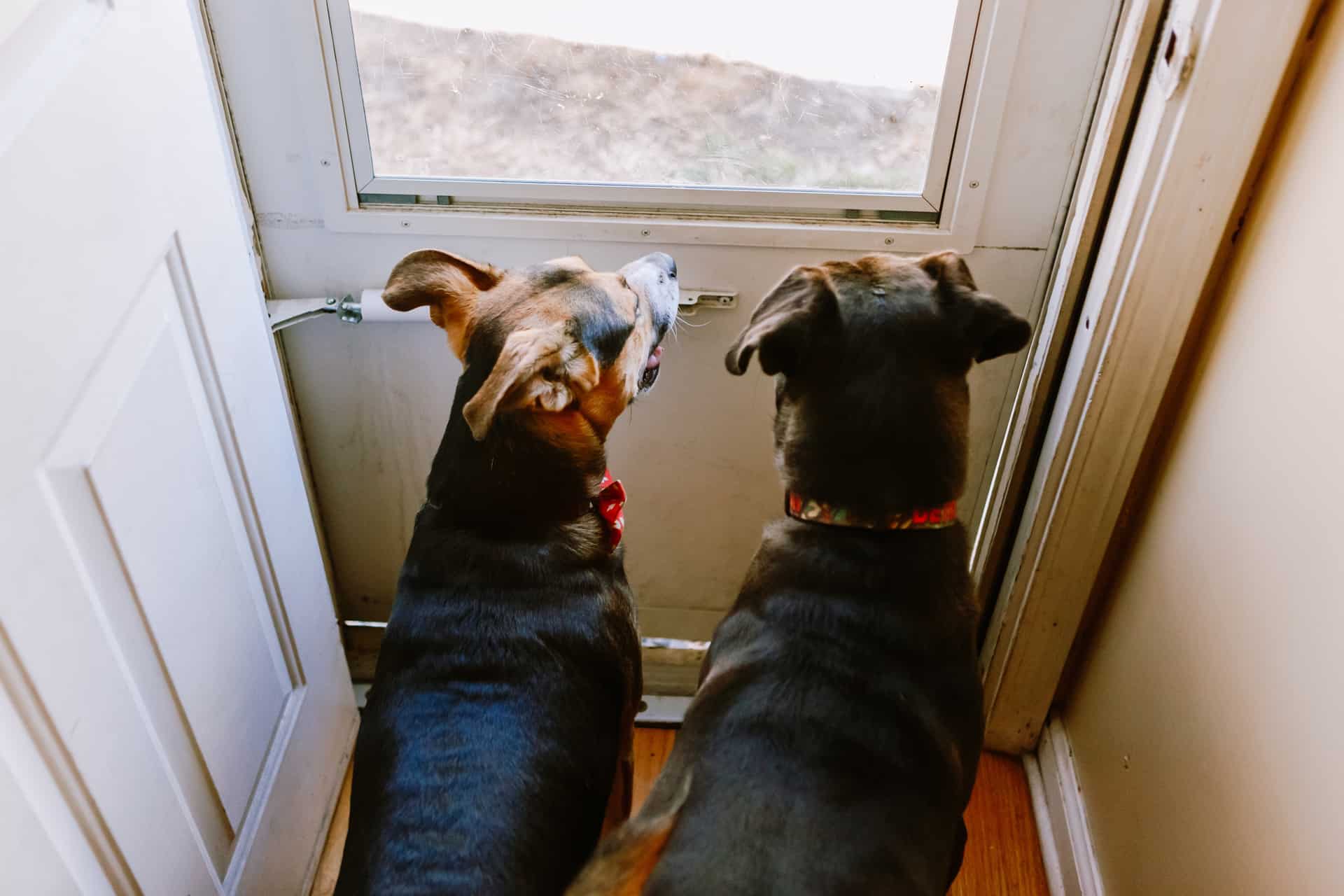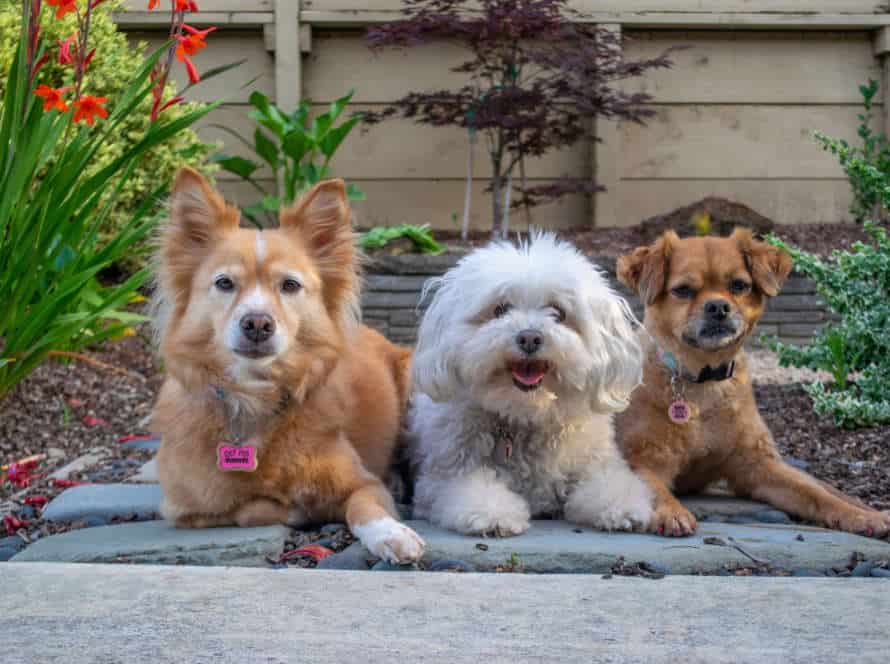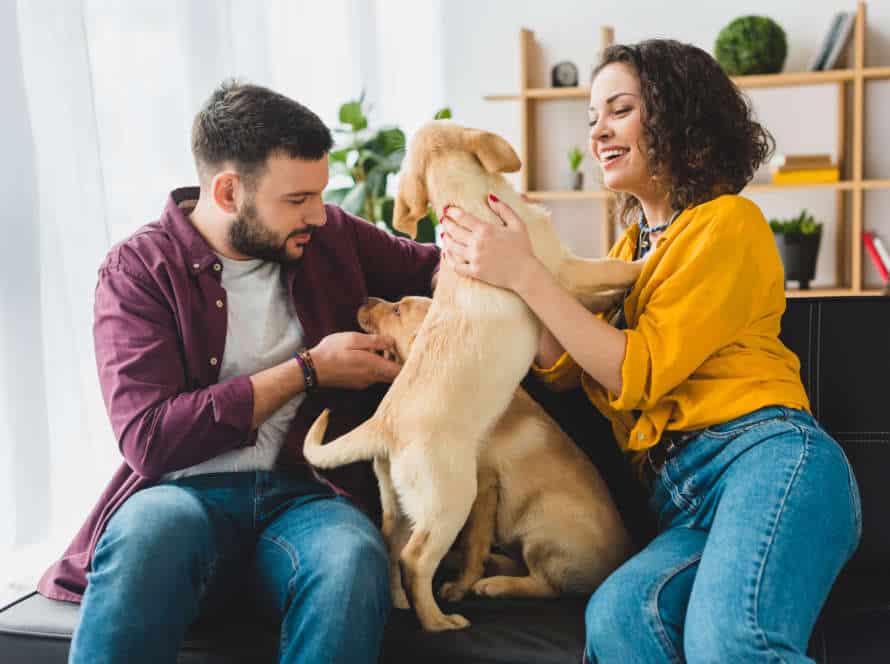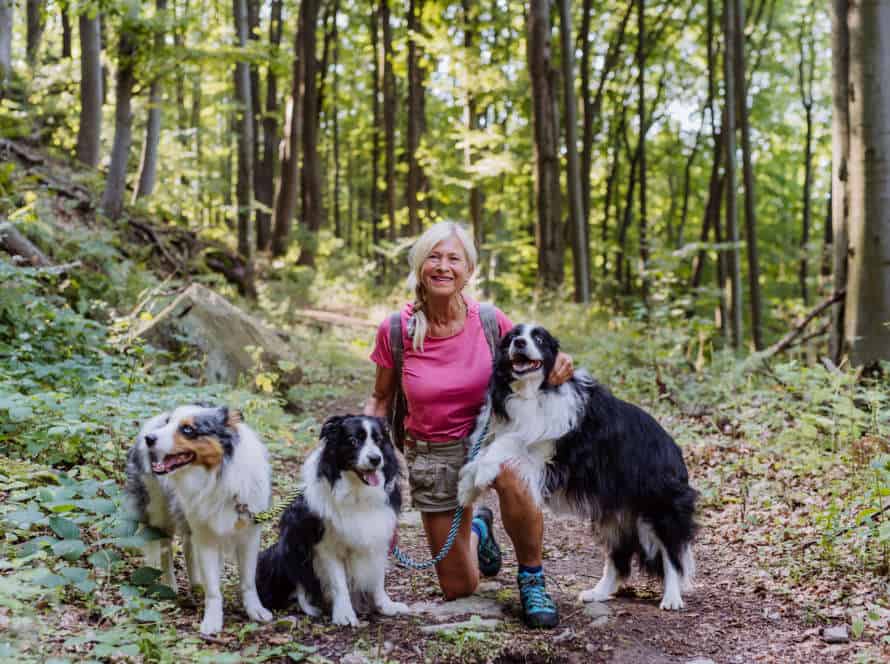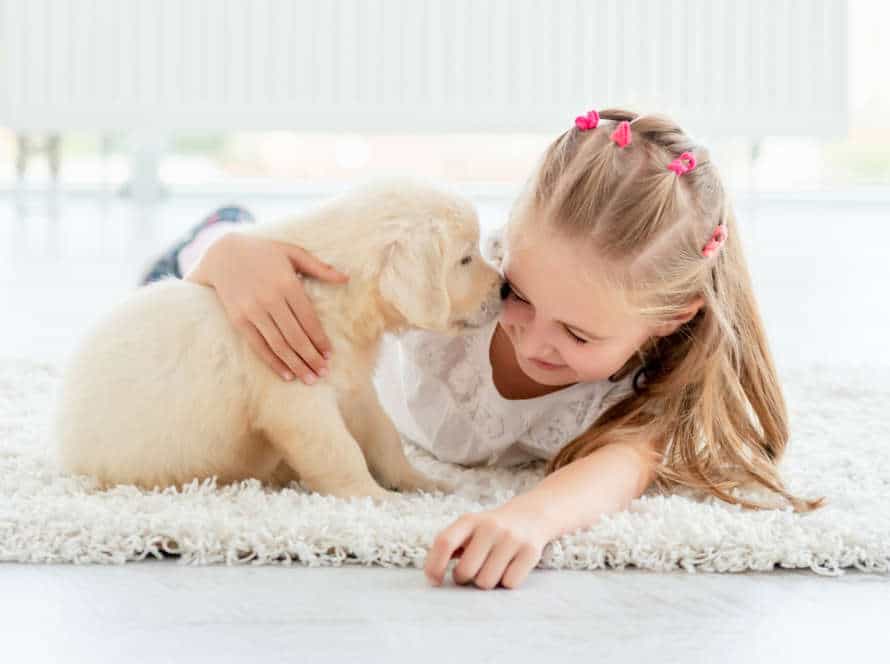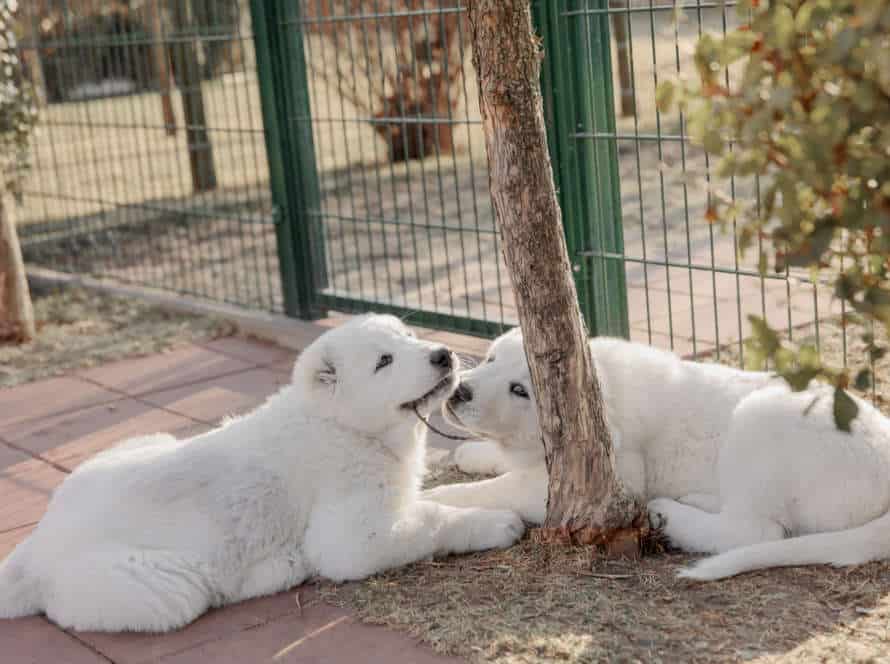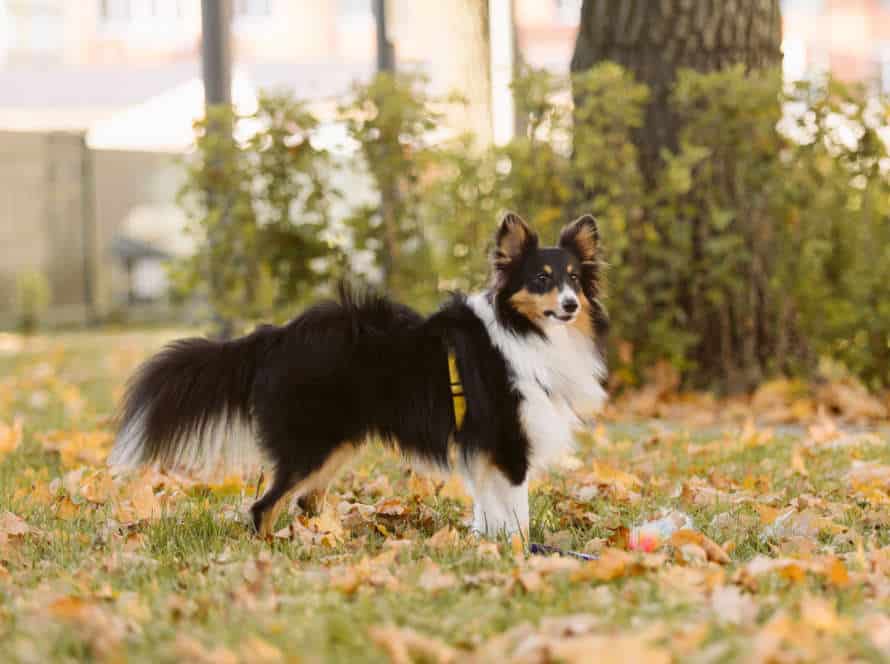Building Trust and Confidence in Your Rescue Dog
Developing a strong bond with your rescue dog is key. Here are some tips to help with this:
- Patience. Be patient with your rescue pup, as they may have behavioural issues or be scared of new surroundings. Give them time to adjust.
- Consistency. Make a regular routine for feeding, potty breaks, playtime and more so your pup knows what to expect.
- Positive Reinforcement. Use treats, toys, and verbal praise to reward good behaviour.
- Training. Get your rescue pup in obedience classes to give them structure and teach commands to them.
- Exercise. Provide exercise and playtime to maintain their physical and mental health.
Building trust and confidence takes time and effort. With patience and consistent effort, you can help your rescue pup feel secure and loved.
Understanding Your Rescue Dog’s Background
Rescue dogs need understanding. It’s key to build trust. To know the pup’s background, look out for signs. Want to know more? Let’s explore further!
Learning about your dog’s breed characteristics
Understand your pup’s breed qualities to better train and look after them. Plus, you can build trust. E.g. if you have a herding dog like a Border Collie or Aussie Shep, you’ll see they have lots of energy, are very clever and enjoy having a task. They may need more exercise and stimulating activities than other breeds. Similarly, if you have a hound like a Beagle, they could have a strong prey drive and be more obstinate during training. Knowing these breed traits can help you adjust your training and give the right kind of exercise and stimulation to make your doggy happy and in shape.
Besides breed characteristics, learning about your pup’s individual personality, background and experiences can also help you form a strong bond with them.
Knowing your dog’s history and past traumas
Gaining an insight into your pup’s past is key for building trust and confidence. Many rescue dogs have been through rough times, like trauma, abuse, neglect and abandonment, which can cause fear, anxiety, and behavioral issues.
To better understand triggers, behavior patterns, and emotional needs, follow these steps:
- Ask the rescue organization or shelter staff about your dog’s background and any known traumas/triggers.
- Observe how your pup reacts to different things, like loud noises, strangers, or other animals.
- Use positive reinforcement training to create a strong bond of trust and communication.
- Stay patient and consistent, and if needed, seek professional help for serious issues.
Identifying any behavior or socialization issues early on
Early recognition of any behavior or socialization issues is essential for building trust and confidence in your rescue dog. Dogs may experience these issues due to prior trauma or neglect. To give the right care and training, it’s vital to spot these signs early on.
Signs of behavior or socialization problems in a rescue dog can include:
- Aggression towards humans or other animals
- Extreme fear or worry
- Destructive actions
- Abnormal barking or whining
- House-soiling or other toilet issues
- Anxiety when apart
If your rescue dog exhibits any of these signs, get professional help from a trainer or behaviorist. With the right care and support, many dogs can overcome these issues and become loving and obedient pets.
Positive Reinforcement Training Techniques
Positive reinforcement training is ideal for developing trust and assurance in your rescue pup. Treats and rewards are used to motivate the dog to perform the desired action. As it rewards the dog in the moment, this technique proves effective.
Let’s look at other ways positive reinforcement can be of help for your rescue dog!
Using treats effectively for training and rewarding good behavior
Treats are great for training and rewarding dogs for good behavior – especially with positive reinforcement. To make the most of treats, use them strategically! Tips to keep in mind:
- Give high-value treats like meat, cheese, or peanut butter.
- Offer treats consistently and right away after your dog behaves well.
- Use treats sparingly – don’t overfeed your pup or they won’t be as effective.
- Rewards should reinforce good behavior, not bribe.
- As your dog learns the desired behavior, gradually reduce treats and replace with verbal praise, petting, or playtime.
By using treats the right way, you can build trust and confidence with your rescue dog and make training a positive experience.
Basic obedience training commands, e.g., sit, stay, come, etc.
Positive reinforcement training is great for building trust and confidence in a rescue dog. Especially when it comes to basic obedience commands like sit, stay, and come!
Here’re some tips:
- Start with the basics – train your rescue dog with these obedience commands.
- Use positive reinforcement – reward good behavior with treats, praise, and play.
- Be consistent – use the same commands and rewards every time.
- Keep sessions short – frequent, short training sessions work better than long, infrequent ones.
- Patience pays – positive reinforcement takes time. So, be patient and celebrate progress.
Pro tip: Make training fun and enjoyable for your rescue pup, and they’re more likely to respond positively!
Understanding and addressing negative behavior, e.g., aggressive barking or chewing
Rescue dogs can often exhibit negative behaviors, such as aggression and chewing. To address these, it’s important to understand why they’re happening. Positive reinforcement is key to building trust and confidence with your pet.
Stay calm and avoid punishing or yelling when your dog is behaving badly. Instead, redirect their energy and reward good behavior.
Positive reinforcement involves praising and rewarding desirable behaviors, like sitting or staying. This helps your dog learn, and reinforces the positive behavior.
Training your rescue dog requires patience and dedication. Positive reinforcement can help them overcome any past trauma and become a happy member of the family.
Bonus: A professional trainer or behaviorist can be very helpful for addressing negative behavior in your rescue pup.
Creating a Safe and Comfortable Environment for Your Dog
Creating an atmosphere of security and comfort for your rescue pup is essential. This will ensure their happiness and contentment in their new home. Even if your dog is usually well-mannered, it is important to build trust and confidence. Setting clear boundaries and a predictable environment will help your pup feel safe.
Designating a quiet and comfortable spot for your pup
Designing a spot for your pup that is quiet and cosy is vital for making a safe and comfortable atmosphere for your dog. This is a key part of creating trust and confidence in your rescue dog.
Here’s what you should think of when selecting the spot for your dog:
- Pick a place that isn’t too loud, so that it doesn’t scare your pup.
- Make sure the area is well-lit, especially at night, to stop accidents and help your pup feel calm.
- Get a bed that is the right size for your pup, so that they can rest and sleep comfortably.
- Place your pooch’s favorite toys and treats near them to keep them mentally active and amused.
Pro tip: Spending time with your dog in their designated spot regularly will build their trust in you and make them feel secure in their new environment.
Creating a routine and sticking to it
Creating a routine is essential for a rescue dog. It sets up a secure, cozy atmosphere and builds trust. It also helps avoid distress and anxiety. Here are some tips to make it happen:
- Feed, exercise, play, and rest at the same time every day.
- Have a set time for walks, bathroom trips, and grooming.
- Decide on a space for the dog’s bed, toys, and food/water bowls.
- Train and obey on schedule.
- Keep your voice, commands, and body language stable.
- Give lots of love and positive reinforcement.
- Every dog is unique; you may need to adjust the routine.
Pro Tip: Consistency is key for a rescue dog. Stick to a regular routine and show love and appreciation for a safe, comfy environment.
Ensuring your dog gets enough exercise and socialization
Ensuring your pup gets enough exercise and socialization is essential for their good health. Regular exercise helps burn energy, reduces stress, and strengthens their muscles and bones. Socialization assists in building confidence, tackling aggression, and encouraging positive behavior with other dogs and people.
Here are some tips to help:
- Go on daily walks or runs, allowing lots of chances to sniff, explore and play in open areas.
- Participate in active playtime activities, like fetch, tug-of-war, or agility courses.
- Sign up for training classes or socialization groups, to help them interact properly with other dogs and humans.
- Supply them with loads of toys and puzzles to keep them mentally and physically engaged.
Remember, a well-exercised and socialized dog is a content and healthy pup!
Patience and Consistency
Patience and staying consistent are vital for constructing a trusting relationship with your rescue pup. To make a secure environment for them, come up with a customary pattern and answer their needs with gentleness and understanding. This will help your pup to rely on and believe you. In return, you and your pup will develop a bond of commitment and friendship.
Being patient in building trust and a strong bond with your dog
Patience and consistency are key to building trust and a strong bond with a rescue dog. Here are some tips to help you:
- Be consistent in routine, schedule, and training. Dogs love routine and predictability. This creates comfort and stability.
- Start small and build gradually. Have patience and persistence when training your pup. Set small goals and gradually increase them.
- Utilize positive reinforcement. Treats, verbal praise, and positive interactions are all great rewards for good behavior. This builds trust and confidence.
- Show empathy and understanding. Take the time to understand your dog’s behavior, body language, and needs. This helps build a stronger connection.
- Pro Tip: Take care of yourself too. Building trust takes time and effort, so don’t forget to take breaks and rest when needed.
Consistently reinforcing positive behavior and training techniques
Commit to reinforcing positive behaviors and training techniques when you want to build trust and confidence in your rescue dog. Patience and consistency are must-haves for making your new pet feel safe and secure. Here are some tips to help you train your rescue dog:
- Be patient and consistent. Training could take time, but stay determined and support good behavior every day.
- Reward your pup with treats and words of praise to encourage their good behavior. Refrain from negative reinforcing like yelling or physical punishment. This can damage your dog’s trust in you.
- Have clear boundaries and rules. This will help your pup understand expectations and create a sense of security.
- Give your dog plenty of physical and mental exercise to reduce stress and anxiety.
- Get help from a professional trainer or behaviorist if you need guidance.
Building trust and confidence with your rescue dog takes patience and effort. But the bond you’ll form will be worth it!
Pro Tip: Consistency and patience are key when it comes to training your rescue dog. Celebrate the small successes and always focus on positive reinforcement techniques.
Understanding the importance of time and effort in building trust
Building trust with your rescue pup is important, but takes lots of time, patience and consistency. Here’s why these are so vital:
- Dogs need to adjust to their new home and owners. If they’ve been through trauma or neglect, it may take longer for them to trust again.
- Consistency is key! Stick to a routine as much as possible. This could include feeding times, walking schedules and training sessions. This gives your pup a sense of safety and predictability, which helps them feel more comfortable and trusting.
- Patience is a must when building trust with a rescue dog. Avoid forcing interactions or expecting instant trust. Focus on building a positive and relaxed relationship over time.
- Remember, building trust is a lengthy process. But by earning your pup’s trust, you’ll have a loyal and loving companion for life.
Professional Help
Building trust and confidence in your rescue dog may be tough, but you can make it easier with professional help. Consider a dog trainer, behaviorist, or holistic vet. They can evaluate your pup’s needs and provide guidance to both of you on the journey to a better relationship.
Consulting with a professional dog trainer or behaviorist
If you’ve just rescued a pup, it could be great to get help from an expert dog trainer or behaviorist. This way, you can build trust and confidence with your new pooch. Consulting a pro can help in many ways. For example, they can assess your pup’s personality, behaviour and history. This helps them create a training plan that fits your pup’s needs and attitude. They can teach you how to read your dog’s body language and how to speak to them in a positive way. Experts can also give you the support and advice you need while training your pup, so you and your pup can have a strong bond and lasting behaviour improvements. Remember to pick a certified, reputable trainer or behaviorist who uses positive reinforcement and always puts your pup’s well-being first.
Seeking advice from your vet
You recently got a rescue pup? Get advice from your vet to build trust with it. They can help with your pup’s health and behavior. Here are some benefits of consulting with your vet:
- Get detailed info about the pup’s medical history, including any pre-existing conditions.
- Practical advice on nutrition, exercise, and grooming.
- Identify and address any behavioral issues, like anxiety, fear, or distress.
Time and patience are key. With the help of a vet, you can provide the care your pup needs. Build trust and confidence.
Joining a rescue dog support group or online community.
Joining a rescue dog support group or online forum is awesome for building trust with your new pup. Here’s why:
- They offer a chance to share stories, ask questions, and get advice from other dog owners who have gone through similar experiences.
- Plus, resources like dog training tips and info about the best food for your breed.
- You can connect to local rescue dog trainers, vets, and other professionals for specific help.
- Plus, these groups make you feel less alone during the transition and give you an understanding community with emotional support.
Pro tip: If you don’t know where to start, search for a local rescue dog group or join an online rescue dog community.
Frequently Asked Questions
1. How can I build trust with my rescue dog?
Building trust with your rescue dog can be achieved through patience and consistency. Spend time with your dog, stay calm and patient, and provide positive reinforcement for good behavior.
2. What should I do if my rescue dog is fearful or anxious?
If your rescue dog is fearful or anxious, it is important to be patient and understanding. Work on slowly exposing your dog to new and potentially scary situations, and provide positive reinforcement for good behavior. Consult with a professional trainer or behaviorist for additional guidance.
3. How do I establish myself as the pack leader with my rescue dog?
Establishing yourself as the pack leader with your rescue dog can be achieved through consistent rules and boundaries, positive reinforcement, and building a strong bond with your dog. It is important to be patient and understanding while also being firm and consistent.
4. What should I do if my rescue dog shows signs of aggression?
If your rescue dog shows signs of aggression, it is important to seek professional help from a trainer or behaviorist. Aggression in dogs can be a serious issue and should be addressed as soon as possible.
5. Is it possible to build trust with an older rescue dog?
Yes, it is possible to build trust with an older rescue dog. While it may take longer than with a younger dog, consistency, patience, and positive reinforcement can help establish a strong bond with your older rescue dog.
6. How can I help my rescue dog feel more comfortable in new environments?
Helping your rescue dog feel more comfortable in new environments can be achieved through gradual exposure, positive reinforcement, and providing a safe and secure environment. Start by exposing your dog to new environments slowly and providing lots of positive reinforcement for good behavior.

